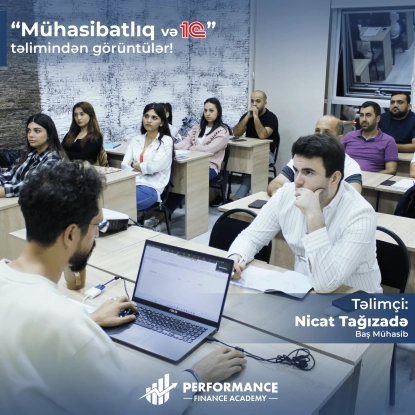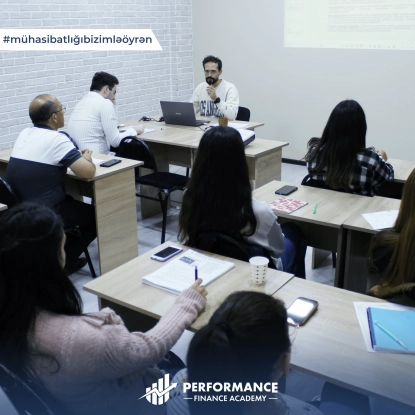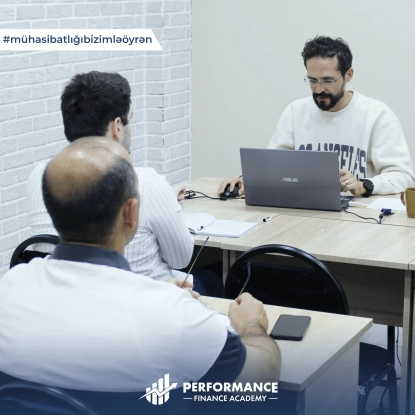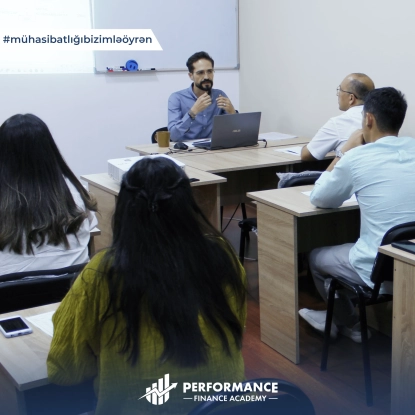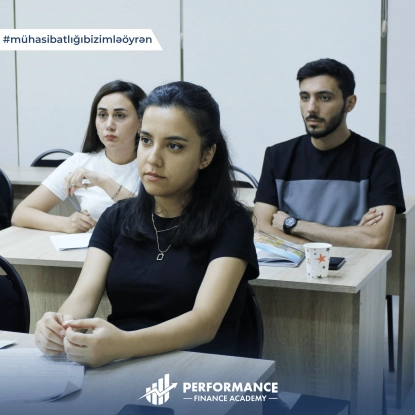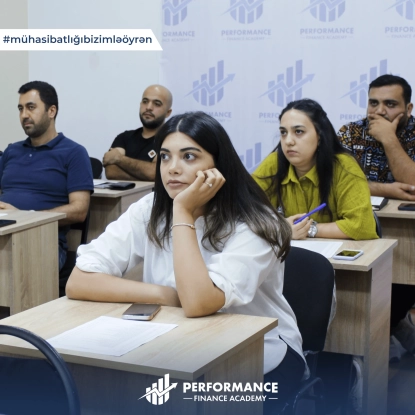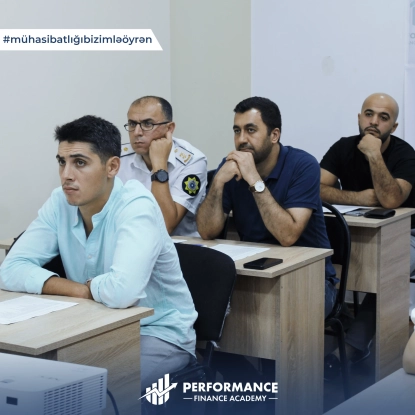The topics covered in Practical Accounting and 1C training are as follows:
Brief titles of topics to be covered in the "Practical Accounting" program
Introduction
- Types of accounting - Accounting and content Elements of financial statements
The structure of the balance sheet
- Dual entry method (transactions), Chart of Accounts Capital accounting (Formation of authorized capital)
Accounting for long-term assets
- Intangible Assets
- Earth Construction Equipment Depreciation Calculations
- Investment Property, Biological Assets, Equity-Accounted Investments, Deferred Tax Assets
- Other Long-term financial assets and other assets
Accounting for short-term assets
- Inventory accounting
- Method of disposal of reserves
- Manufacturing Costs
- Cash accounting
- Accounting of settlements with debtors
Capital accounting
- Issue Proceeds,
- Redeemed Capital
- Capital Reserves
- Retained Earnings (Loss)
Accounting for long-term liabilities
- Accounting for Interest-Earning Liabilities
- Accounting for Accounts Payable
- Long-Term Financings and Receipts
Accounting for short-term liabilities
- Accounting of obligations that generate interest expenses.
- Obligations for tax and other mandatory payments.
- Accounting of settlements with wages
Preparation of financial statements
- Statement of Profit and Loss and Other Comprehensive Income (P&L)
- Statement of Financial Position (Balance Sheet) Statement of Changes in Equity
- Statement of Cash Flows
Declaration of simplified tax
- Declaration of Value Added Tax
- Quarterly report on compulsory state social insurance Quarterly report on unemployment insurance
- Income Tax return
- Tax return withheld at the source of payment related to salaried employment
Excel
- Visual representation of all transactions important in the business process for financiers and accountants
Topics that will be practiced in part 1C 8.3:
1. Adding an entity
2. Counterparty
3. Nomenclature 4. Warehouse
5. Primary balances
6. Purchase (Goods, services, currency purchase, property purchase)
7. YGB on import
8. Inclusion of additional costs
9. Sale
10. Home registration
11. Home Deletion
12. Purchase of QMA
13. QMA accounting
14. Removal of QMA
15. Deletion of goods based on invoice
16. Cashier Entry (for all types)
17. Cash Expenditure (by whole type)
18. Advance report
19. Creating a bank name
20. Opening a bank account
21. Incoming payment (whole type)
22. Outgoing payment order (for all types)
23. Adv deposit receipt
24. VAT deposit charges
25. Conversion
26. Loading of Rate
27. VAT deposit charges
28. Conversion
29. Loading of Rate
30. Closing months
What are the benefits we offer to Performance Finance Academy students?
- Full practical teaching from 0;
- To study accounting in 3 fields Production, service and construction;
- We present you the video materials of the lessons at the end of each lesson;
- Official certificate
- You will get a direct recommendation letter from the person who was chosen as the accountant of the year by the state in his field;
- Free mentoring support on your own work if you are working or will be working in the future;
- Students who have successfully completed the training are directed to the internship program and support is provided for employment.
Training period: 3 months
Instructors:
Elshan Salmanov
Our trainer Elshan Salmanov, who has more than 10 years of work experience, has successfully obtained results in the National Accounting, International Accounting ACCA and DipIFR certification exams. Currently, he works as a financier and chief consultant in one of the leading companies.
Nijat Taghizadeh
Nijat Taghizadeh, our trainer with more than 10 years of professional work experience in the field of accounting, worked as a chief accountant in various fields at "Jahan Holding" Union of Commercial Companies. He is a professional accountant according to IFRS. Specialized in various accounting programs such as Logo, Mikro, Accounting 1C, Pegasoft.
Finance Accounting
- Introduction to finance elements and financial statements, principle of financial equilibrium
- Operations for increasing financial equilibrium
- Guidelines for financial consolidation and journal entries
- Cash and cash equivalents
- Annuity system for loan payments
- Debtor and creditor debts
- Doubtful and hopeless debts
- Debts with debtor characteristics
- VAT and its refund process
- Determination of initial value of reserves
- Determination of carrying value of reserves
- Accounting for acquisition, sale, and write-off of reserves
- FIFO, LIFO, and AVCO methods
- Determination of initial value of fixed assets
- Capitalization costs of fixed assets
- Methods of depreciation for fixed assets and repair expenses
- Disposal and revaluation of fixed assets
- Determination of initial value of intangible assets
- Capitalization costs of intangible assets
- Methods of depreciation for intangible assets
- Write-off of intangible assets
- Accounting for financial assets
- Valued liabilities and contingent liabilities
- Concept of capital and its types
- Preparation of general ledger accounts
- Preparation of turnover tables
- Preparation of trial balance
- Preparation of financial statements
- Balance sheet
- Profit (loss) statement
- Statement of changes in equity
- Cash flow statement
Tax Accounting
- Nature and forms of the organization
- Accounting for commercial transactions and valuation of inventory
- Production costs
- Accounting for fixed assets and intangible assets
- Debtor and creditor debts
- Calculation of exchange rates
- Financial reporting forms
- Financial equilibrium of operations
- Financial reporting forms and adjusted entries
- Analysis of financial statements
- Review of accounting principles
- Understanding of taxes and principles of tax withholding
- Understanding of insurance payments
- Mineral tax
- Excise tax
- Road tax
- Property tax
- Simplified tax
- Value added tax
- Personal income tax and calculation of taxes from payment sources
- Profit tax
- Review of tax accounting
- Employment contract and calculation
- Calculation of leave and examination expenses
- E-taxes, e-customs, e-gov, E-MAS program
- Online cargo, E-invoice
- Applications
- Documentation
- Analysis of personal balance sheet
- Submission of declarations
- Customs payments
- Bank payments
- Tax payments
- Company establishment
- Employment contracts
- Calculation of salary
- Purchase of goods
- Procurement and service purchases
- Production of goods
- Customs operations
- Bank operations
- Debtor and creditor operations
- Sale of goods and services
- Analysis of balance sheet
Instructor:
Instructor
Elvin Alimardanov
Elvin Alimardanov is a finance and accounting expert with over 10 years of experience. He has received several certificates for his services in the finance field and has been recognized for his contributions in conferences and forums. In 2018, his teaching material "Accounting and Reporting" was nominated for the "Best Book of the Year" award in the field of finance accounting at the 2nd National Accountants Forum. In 2021, he was nominated for the "Best Accountant of the Year" award at the VII Eurasian Forum of Accountants and Auditors.
Training Duration: 3 months
